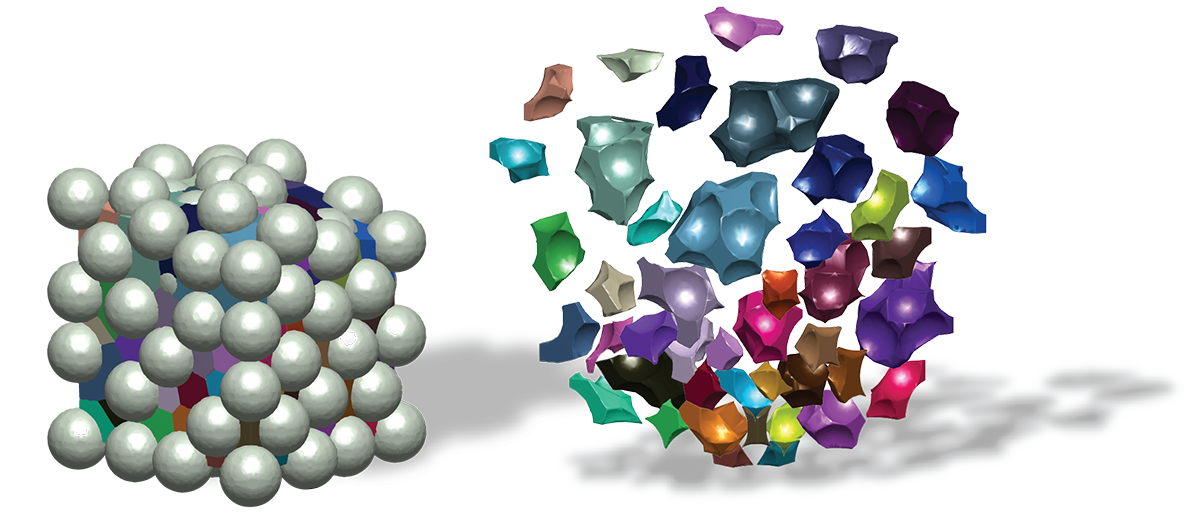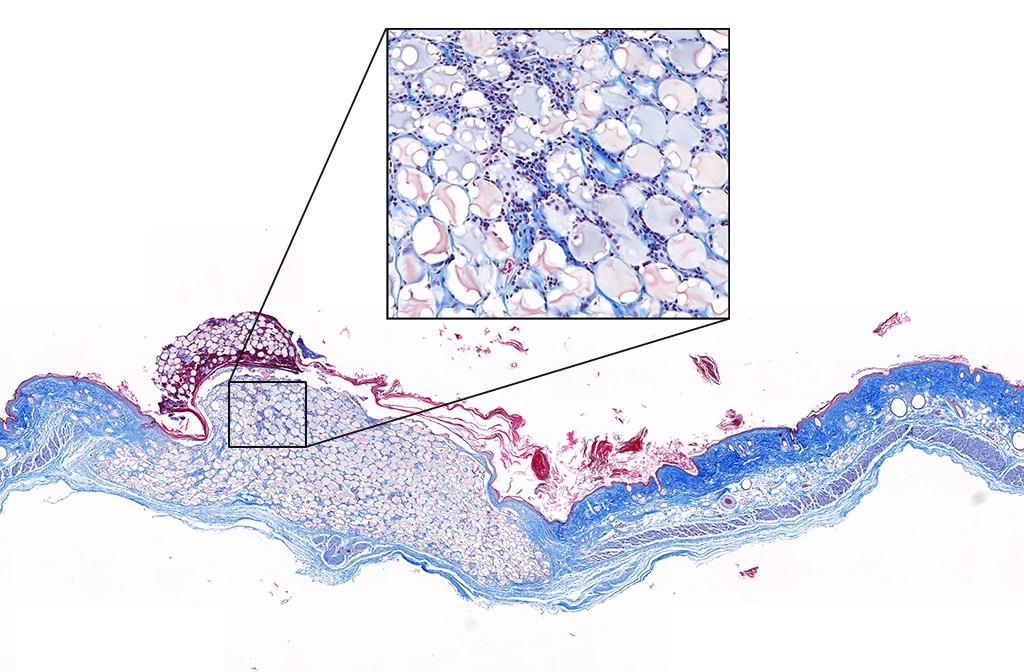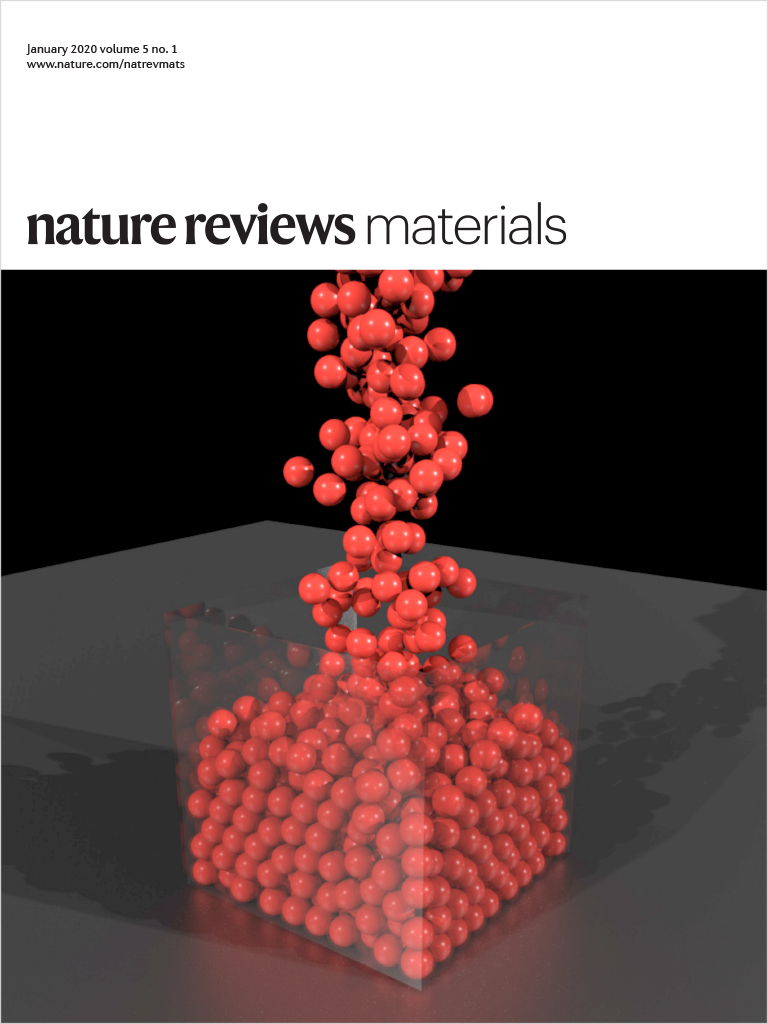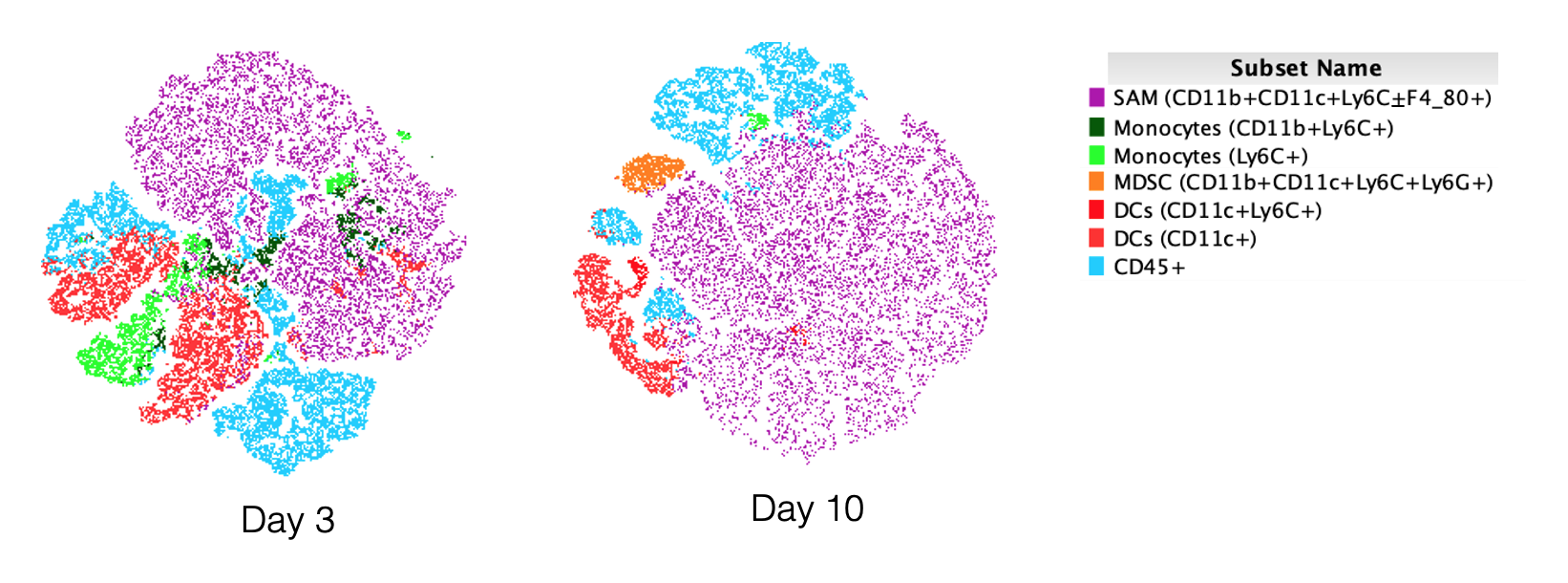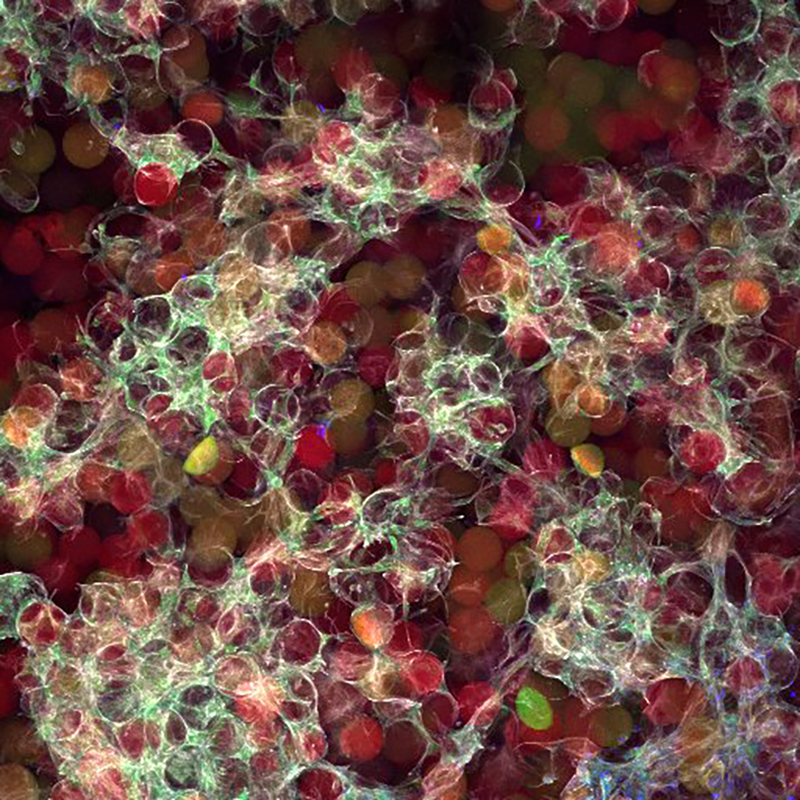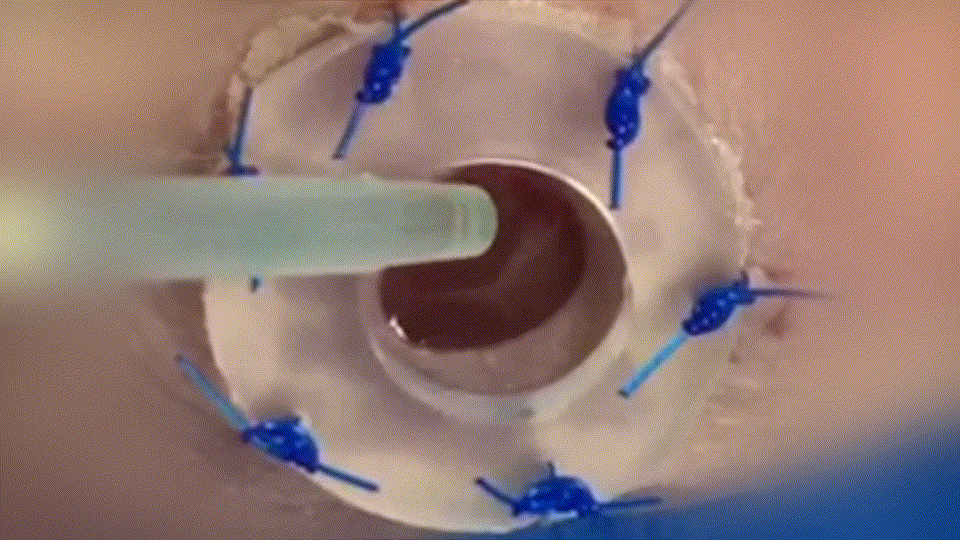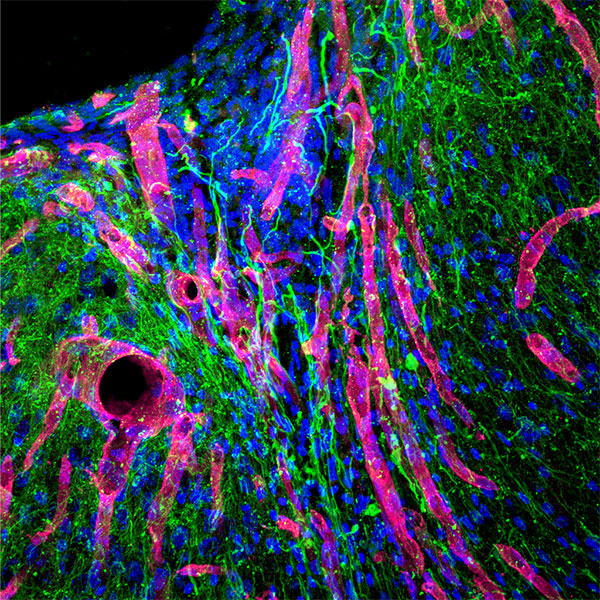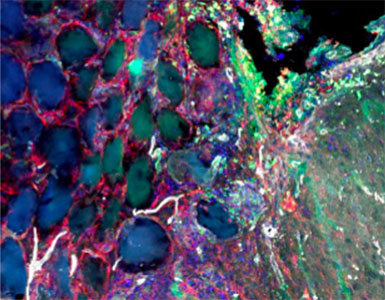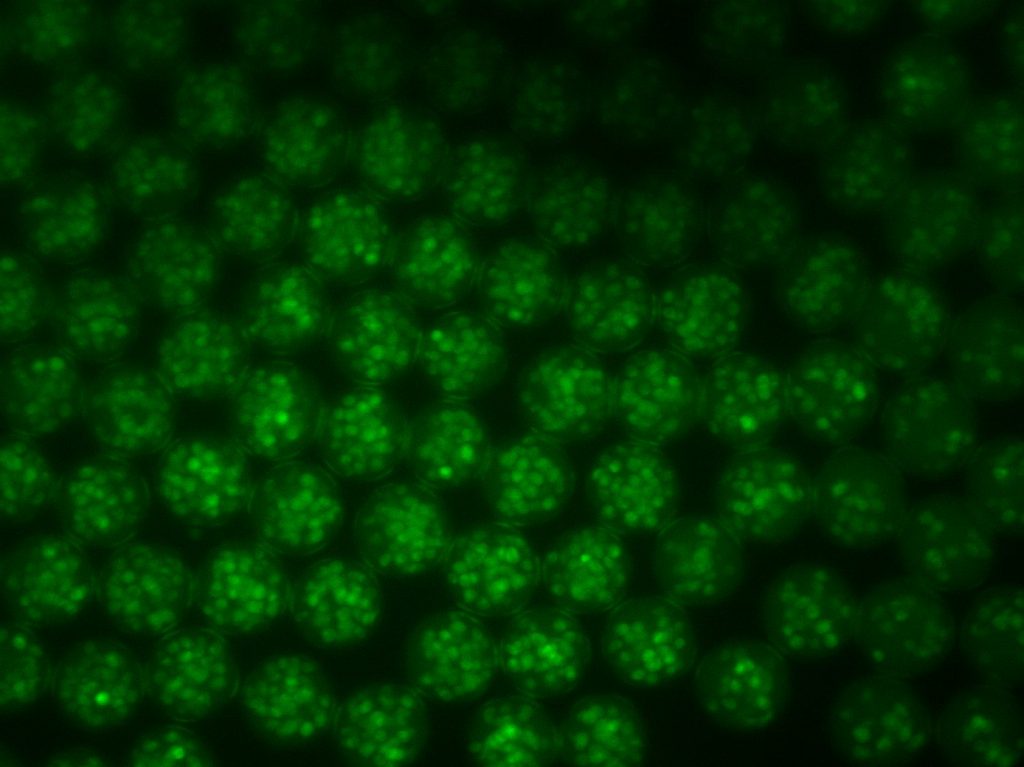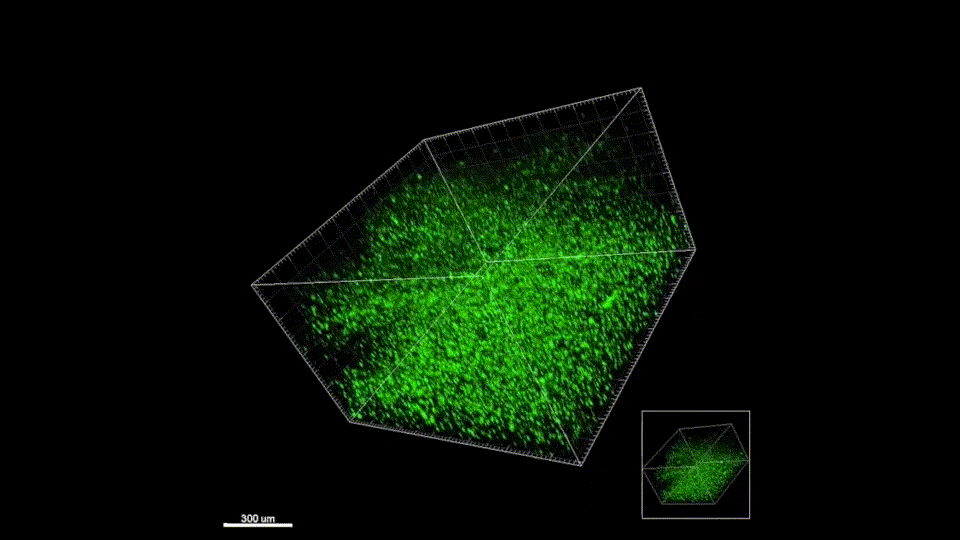Altmetric Score
Dimensions
Citation
The extracellular matrix (ECM) microenvironment is increasingly implicated in the instruction of pathologically relevant cell behaviors, from aberrant transdifferentation to invasion and beyond. Indeed, pathologic ECMs possess a panoply of alterations that provide deleterious instructions to resident cells. Here we demonstrate the precise manner in which the ECM protein fibronectin (FN) undergoes the posttranslational modification citrullination in response to peptidyl-arginine deiminase (PAD), an enzyme associated with innate immune cell activity and implicated in systemic ECM-centric diseases, like cancer, fibrosis and rheumatoid arthritis. FN can be citrullinated in at least 24 locations, 5 of which reside in FN’s primary cell-binding domain. Citrullination of FN alters integrin clustering and focal adhesion stability with a concomitant enhancement in force-triggered integrin signaling along the FAK-Src and ILK-Parvin pathways within fibroblasts. In vitro migration and in vivo wound healing studies demonstrate the ability of citrullinated FN to support a more migratory/invasive phenotype that enables more rapid wound closure. These findings highlight the potential of ECM, particularly FN, to “record” inflammatory insults via post-translational modification by inflammation-associated enzymes that are subsequently “read” by resident tissue fibroblasts, establishing a direct link between inflammation and tissue homeostasis and pathogenesis through the matrix.








